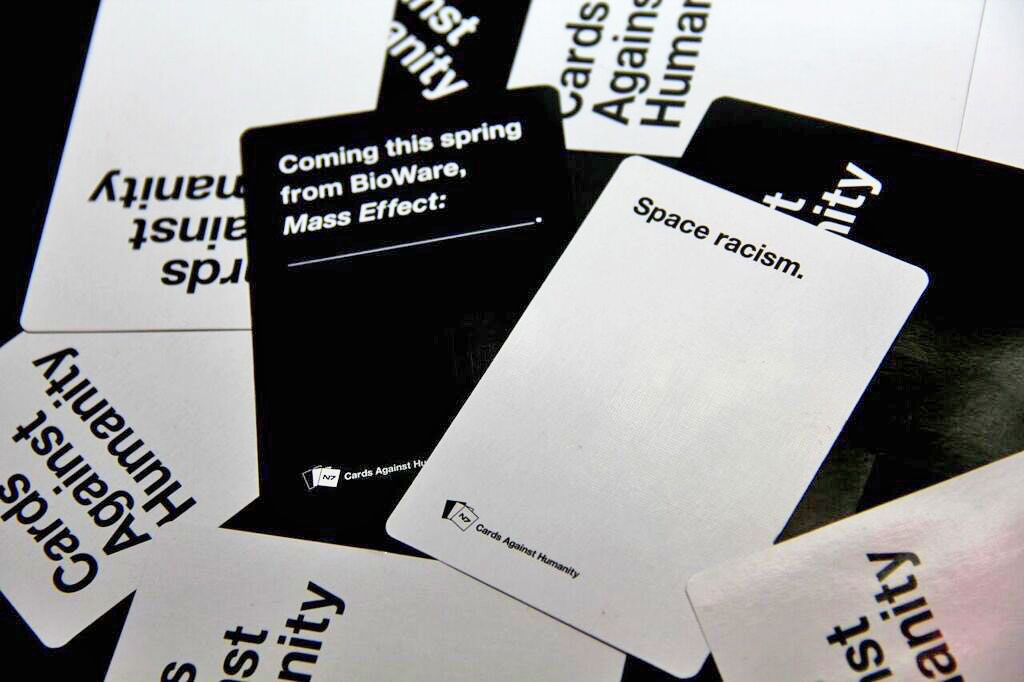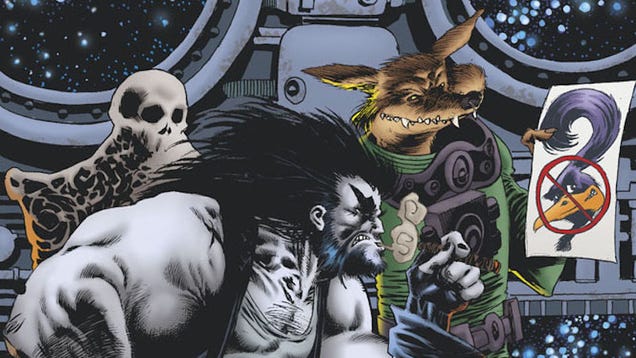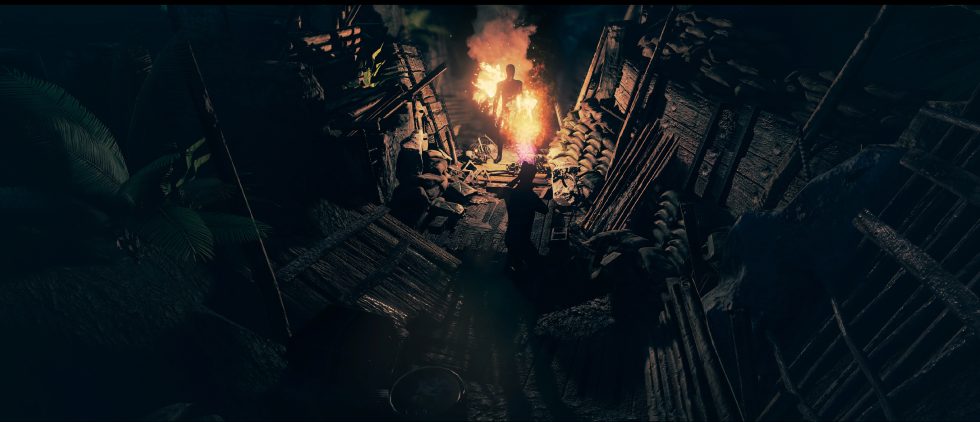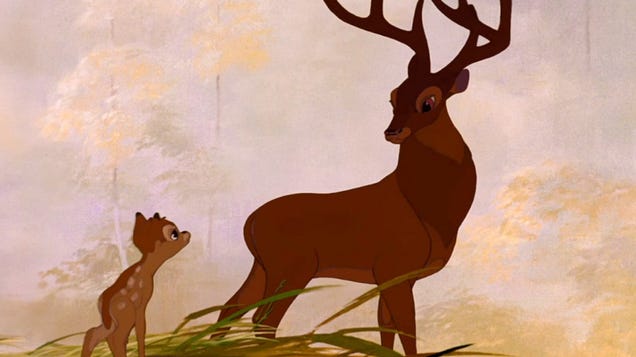A version of this post originally appeared on Tedium, a twice-weekly newsletter that hunts for the end of the long tail.
The idea that there should be limits on the quality of what ends up on or TV screens is a common one that’s been around for ages.
Heck, that’s why one of the defining shows of the 1980s is called You Can’t Do That On Television. Which is why, in a weird way, it kind of makes sense that many of the new shows actually getting on the air in 2017 are actually revivals of successful ones—including, as was just announced, Will and Grace.
Nothing against that show or its now-richer stars, but on a purely creative level, more ideas are thrown out in the television world than perhaps in any other industry.
That’s because most new shows don’t make it past the pilot, and television pilots are, at their core, just giant, costly bets.
And I’m not kidding when I say costly: The average major network spends roughly $100 million a year on development, according to the Los Angeles Times, with a big chunk of this being made up of unsold pilots.
The problem is that creating pilots is really expensive, because you basically need to put together all of the elements for the show, from plot, to script, to cast, all for the benefit of a handful of executives.
Which means that the cost of a pilot—estimated at $8 million in the case of dramas—is four times the cost of a regular episode. The issues with the process have led networks in recent years to order shows that go directly to series.
(This Priceonomics article breaks down why the system is set up this way.)
That means that there are often winners and losers—along with a great desire to recoup some form of investment from the lost bet.
A good example of this aired on July 3, 1987—a Friday night, the day before the Fourth of July. It was a new show created by Jim Henson, and it debuted on CBS.
Considering Henson’s track record at the time—having played a direct role in creating at least three legitimately classic television shows by this point, and while he was coming off the commercial failure of the cult classic Labyrinth, he was still doing very bankable stuff—it was a weird way to treat a major star.
But Puppetman, which can be seen here in full, didn’t make it past the pilot stage, so it was dumped into the CBS rotation as part of its anthology series CBS Summer Playhouse. It’s where pilots go to die.
The idea behind Puppetman was slightly ahead of its time—essentially a comedy about a puppet show, breaking the fourth wall in a way slightly closer to NewsRadio than The Muppet Show—but it wasn’t picked up, and CBS Summer Playhouse was something of a last ditch effort to see if audiences would really care. (Alas, audiences weren’t won over by puppeteer Richard Hunt’s considerable charms as a human actor.)
Another show of this vein, a small-screen adaptation of Coming to America, showed up on CBS Summer Playhouse in 1989. The passage of time hasn’t made the show any better as an idea.
“The pilot didn’t sell, and for good reason: It is bad. The movie is to the television show as McDonald’s is to McDowell’s,” recalled Fusion’s Molly Fitzpatrick, in a critique of the TV adaptation of Eddie Murphy’s career pinnacle.
The show, which featured In Living Color actor Tommy Davidson doing his best Prince Tariq impression, flopped hard, in part because (according to Fitzpatrick) it “mostly functions as a disjointed vehicle for Davidson’s Stevie Wonder and Michael Jackson impressions.”
(A year later, CBS actually went to series with a similarly not-great idea for a movie-turned show, Uncle Buck.)
It makes sense that a show like CBS Summer Playhouse existed. During the early years of television, there was a long legacy of anthology shows like Love, American Style airing segments that were intended as backdoor pilots, a strategy that gave us a lot of junk, but also one of the most popular TV shows of all time, Happy Days.
But CBS Summer Playhouse, and equivalent shows for ABC (Vacation Playhouse, which aired between 1963 and 1967) and NBC (under various names during the late 1970s, including Comedy Theatre, Comedy Time, and Comedy Theater) were essentially created to fill up space during a time of the year when people would rather be outside than watching TV.
(As Television Obscurities notes, many attempts were made to repackage these pilots during the first 30 years or so of television’s mainstream success.)
It was a little less obvious at first, because anthology series were common in the ‘70s. But by the 1980s, cable had taken the wind out the concept.
This phenomenon was eventually seen for what it was—filler—but it nonetheless brought some interesting ideas for shows to the small screen. In CBS’s case, it was relatively transparent about the purpose of its anthology show: The network was clearly litmus testing. It gave viewers the opportunity to call into one of two 1-900 numbers—1-900-220-2311 if they liked the show, 1-900-220-2322 if they didn’t.
As it turns out, having people vote on failed pilots creates two problems: First, people who vote like everything—the pilots, on average, received 90 percent approval ratings from people who willingly dialed a pay number and told CBS their opinion on a TV show.
Second, the conceit of the show eventually made the idea untenable.
“I think this’ll probably be the last year of Summer Playhouse,” then-CBS President Howard Stringer told Gannett News Service in 1989. “The audience has got the word that these are failed or busted pilots. [That] worked really well for a time, but now the word was out.”
And they never did it again. CBS Summer Playhouse was the last time that a major network blatantly aired unaired pilots in weekly series form.
Of course, the thing about pilots is this: The layer of television executive meddling only goes so far.
Quite often, really terrible stuff gets to air anyway. And good shows die on the vine before they even hit the air. (Fortunately, so do bad shows. Usually.)
In August of 1992, BBC2 decided to make that point in a totally hilarious way, by airing a dedicated theme night to terrible television in the BBC archives they called “TV Hell.”
The night, hosted by Angus Deayton and Paul Merton—with Deayton playing the role of The Devil—is effectively like watching the BBC run roughshod across British television’s long legacy of horrible music performances, bad ideas for shows, and terrible interviews. Of which there were a bunch of all three.
They went after everything—including station logos, Eurovision, the horrible track records of competing networks, and even the production process of TV itself.
While the concept borrowed somewhat liberally from Mystery Science Theater 3000, it can be said that the endeavor predicted a lot of American trends that hit cable television soon after—including VH1’s nostalgia trip and the controlled mayhem of the Adult Swim block. For a one-time event, its legacy is fairly long.
A lot of weird stuff aired that night—definitely check out famed radio DJ John Peel’s compilation of horrible music featured on the BBC—and fortunately a YouTuber had the good sense to create a playlist of BBC2’s big event, with content listed roughly in order. (Side note: Did you know the BBC archives listings for all of the television and radio programs it’s ever aired between 1923 and 2009? TV Guide probably doesn’t do that.)
But the most interesting/disturbing program of the night was a pilot that hadn’t seen light in BBC’s archives in more than 25 years. Mainly for Men, as the unaired pilot was called, appeared to be an attempt to create a TV-show version of a “lad mag.”
“As the title implies, this is a program, fellas, just for you,” host Don Moss states at the start of the program, before analyzing the attractiveness of the Venus de Milo statue.
Everything about the idea (viewable here, though NSFW) was plainly questionable—featuring some nudity, a whole bunch of casual sexism, some apparent shark fishing, and a song about “the ideal woman” playing over scenes of a woman doing housework and dancing around.
(The pilot also spent time talking cars, which emphasizes the vague parallels the show has with the modern-day Top Gear. When Jeremy Clarkson was infamously booted from that show, the Mirror firmed up the comparison between the two shows, because of course they did.)
Mainly for Men was relegated to the graveyard slot for an entire night about terrible programming, so you can tell BBC was just looking to get it out of the archive so they could burn it. (Considering that the U.K. actually brought us a quickly cancelled series called Heil Honey I’m Home!, things certainly could have been worse.)
On the plus side, Mainly for Men probably didn’t cost $8 million to produce.
The modern TV pilot game has shifted quite a bit in recent years, due to all the additional options for watching content. With Netflix basically giving money to anyone with a halfway-decent idea, networks seem to be obsessed with either sure things or minimizing the risks of their giant investments.
That means that it’s rare for an unsold pilot to make it to the airwaves in the 21st century, though it still happens. The Munsters has been the subject of multiple failed TV pilots over the years, including before its initial pickup in the 1960s, when a pilot for the show, titled “My Fair Munster,” was created (notably, the unaired pilot, which uses some of the same actors, was in color, though the show it inspired was black-and-white).
But more recently, NBC aired a remake of the show developed by Bryan Fuller, Mockingbird Lane, as a one-hour special. It wasn’t picked up, but is one of the few recent examples of a pilot making it to air.
It’s understandable why the pilot process is in decline. Beyond being costly, the pilot process often—especially in the case of failures—turns out to not be so great for viewers.
But sometimes, the process is the best thing for everyone involved. Two notable examples of this, both of which are somewhat famous:
Lookwell, the Adam West vehicle that played off of the Batman star’s public image to hilarious effect, didn’t get picked up by NBC despite being amazing. However, it’s a good thing it didn’t, because the series’ two creators—Conan O’Brien and Robert Smigel—would go on to create some amazing late-night comedy together.
The Jake Effect, a Jason Bateman vehicle that nearly went to air in 2002, is said to be a pretty good show, and was picked up by Bravo as part of its “Brilliant But Cancelled” series. But because NBC decided to drop the show after seven episodes were shot, Bateman was made a free agent, allowing him to redefine both his career and comedy in general with the immortal Arrested Development.
Maybe it’s the luck of the draw. What if these shows actually went to series? Would we see Jason Bateman as a dependable comedic actor, or still trying to shake off his teen image? Would Conan O’Brien still be writing for The Simpsons? It’s hard to tell.
But it makes me wonder about the actors, writers, and producers who didn’t get quite so lucky in the pilot lottery.
A version of this post originally appeared on Tedium, a twice-weekly newsletter that hunts for the end of the long tail.














 If your favorite part about Mass Effect is making jokes about the game's wide-array of sexual paring options, you can skip Andromeda -- Cards Against Humanity has announced a limited run Mass Effect expansion. Well, expansion is a bit of an overstate...
If your favorite part about Mass Effect is making jokes about the game's wide-array of sexual paring options, you can skip Andromeda -- Cards Against Humanity has announced a limited run Mass Effect expansion. Well, expansion is a bit of an overstate...
















 Lately, there's been a lot of buzz around footage PtoPOnline posted of a scrapped, Mega Bloks-themed Halo action game. Why did it get the axe when its mix of shooting and construction looks like a blast to play? You're not about to get that exact tit...
Lately, there's been a lot of buzz around footage PtoPOnline posted of a scrapped, Mega Bloks-themed Halo action game. Why did it get the axe when its mix of shooting and construction looks like a blast to play? You're not about to get that exact tit...





